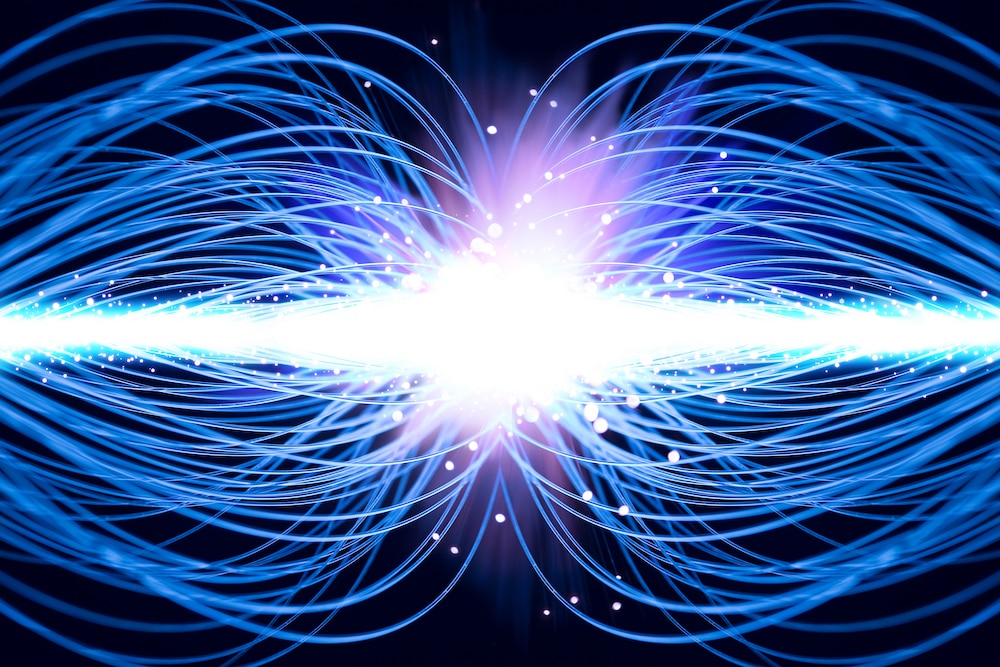Create a free profile to get unlimited access to exclusive videos, sweepstakes, and more!
Particle accelerator reveals the early universe’s mysterious X particles
These particles could change our picture of how the early universe evolved.

Our understanding of physics can tell us a lot about the universe as it is, as it was, and as it one day will be. Using telescopes, we’re able to peer into the distant reaches of space, and in so doing, peer back in time. When we do, we find a strange place in the moments after the birth of the universe when the rules of reality seem to have manifested in unusual ways.
In the beginning, as it were, the universe was a hot swirling mass of plasma and particles. Those particles eventually cooled and became atoms and electrons and galaxies and planets and people. Inside that hot mass of primordial stuff were mysterious X particles, a name which was given to them as a placeholder of sorts because we weren’t quite sure what they were or how they worked. Scientists believed we might be able to create X particles inside accelerators like the Large Hadron Collider (LHC), and it turns out they were right.
A new paper by a team of nearly 200 scientists, including Jing Wang and Yen-Jie Lee from MIT’s Laboratory for Nuclear Science, outlines the confirmation of X particles in the plasma soup which occurs in the aftermath of particle collisions. Their findings were published in the journal Physical Review Letters.
This grouping of scientists is known as CMS Collaboration, an international team which collects and investigates data from the Company Muon Solenoid, one of the detectors inside the LHC. For this study, they used the data set provided by collisions carried out in 2018.
The LHC works by spinning up pieces of matter — in this case lead ions — to near the speed of light using powerful magnets, before steering them into one another in a violent crash. The collisions cause the matter to break apart and reform into elementary particles in a quark-gluon plasma which simulates what might have happened at the beginning of the universe.
The 2018 data set included roughly 13 billion collisions, each of which resulted in tens of thousands of particles. Out of those trillions of particles, the team was able to detect the signature of approximately 100 X particles. They estimated their mass and dubbed the particles X (3872).
"You can imagine how many combinations you can have from particles during a collision. In order to get an X particle, you have to combine four particles at once," Wang told SYFY WIRE.
"X particles are hard to create, even when they are enhanced in a quark-gluon plasma. Also, to detect this particle we have to use a very specific decay chain. Those two factors make them very difficult to detect," Yen-Jie Lee said.
Sifting through trillions of potential particles in search of X particles was a huge job, one which could have taken scientists a staggering amount of time. To get around this problem, the team trained an algorithm to look for specific signatures inside the noise. The algorithm searched for certain decay patterns the team believed would be present around X particles. That allowed them to cut down the total number of potential targets to find what they were looking for.
Moreover, they found some interesting characteristics which differ from those of more standard matter. Most things in the universe are comprised of neutrons and protons, each of which are comprised of either two or three quarks. X particles, however, appear to be made of four quarks. Alternatively, they may be a new type of molecule entirely, made up of two mesons, each of which are themselves made of two quarks.
"This means they are two mesons loosely bound and orbiting each other almost like a molecule," Lee said. "If we managed to detect the first one, there must be a lot of different kinds of mesonic molecules. That would change our view of how the early universe evolved."
Figuring out which of these two hypotheses is correct isn’t yet possible. Determining the precise nature of X particles remains beyond our grasp, mostly because of the size of the data set and because their incredibly short lifespans make them difficult to probe. That said, the discovery proves that they exist and that we are able to find them.
Now that we know what we’re looking for, future observations of X particles should teach us about what it was like in the fractions of a second after the Big Bang.














